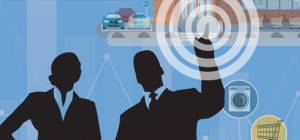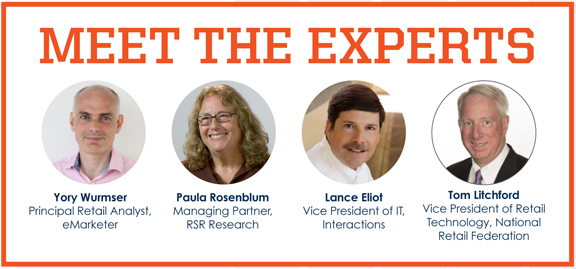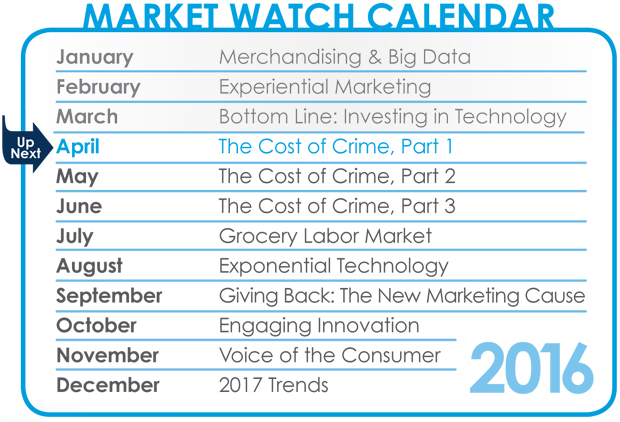 By Retail News Insider
By Retail News Insider
From beacons to mobile payments to the Internet of Things, there’s no shortage of new technologies in the retail market today. But making technology investments is a huge expense for retailers—one that goes far beyond simply buying new equipment or software. Retailers often have multiple locations to consider the costs for, as well as the challenge and expense of integrating new technologies with older point-of-sale (POS) systems, like cash registers. So when are those challenges worth the investment? This month, the Retail News Insider team explores five top retail technology trends and delivers expert insights on where retailers should be making their investments, the benefits they can expect and best practices for implementation.
1) Payment security
The Trend: In response to continued retail hacks, several new technologies that promise to help keep consumers’ financial information more secure are being introduced. The most notable include EMV “chip” cards, though biometrics and mobile payment platforms are also gaining attention.
The Expert Scoop: All of the experts we interviewed agree that payment security—particularly EMV chip adoption—is paramount for all retailers. “EMV isn’t really a choice anymore,” says Paula Rosenblum, Managing Partner at RSR Research. “You have to do it.”
The deadline to implement EMV technology or assume liability for consumer losses due to data theft or fraud went into effect October 1, 2015. Yet according to surveys, up to half of retailers have yet to fully implement the new technology. Why? A number of factors play a role.
“The problem with EMV deployment right now is the certification process,” says Tom Litchford, Vice President of Retail Technology for the National Retail Federation (NRF). The process of accepting new EMV chip cards isn’t as simple as installing new readers at point-of-sale (POS) systems. Rather, each POS has to be certified by the organization governing EMV technology. With the rush leading up to the 2015 deadline, certification times rose from a few weeks to a few months, on average.
Difficulties in getting consumers up to speed on how to use the new chip-card readers and working through challenges with the readers themselves are also causing delays for some retailers, says Rosenblum. But that’s not a reason to forgo the implementation. “There’s not much retailers can do but work through it during slow times of year,” she says. With the holidays over, now would seem to be an ideal time.
The Bottom Line: Invest now.
What is EMV?
It’s a set of security standards developed by EuroPay, MasterCard and Visa (EMV). Using computer chips embedded within credit and debit cards, EMV technology helps reduce fraud due to lost, stolen and counterfeit cards.

2) Data and Analytics
The Trend: New technologies are helping retailers gather more data about shoppers, shopping behavior, inventory management and other metrics than ever before. When combined with new analytics technologies, this can enable retailers to glean insights to inform more targeted development and launch of products, marketing campaigns, on-shelf merchandising and more.
The Expert Scoop: According to Yory Wurmser, Principal Retail Analyst for eMarketer, data integration and analytics are critical for retailers looking to compete in today’s omnichannel environment. “You want to have a pretty seamless experience in-store and online,” he says. “For example, you can’t have inventory showing online but not in-store, or a deal that’s valid on one platform but not the other.”
For retailers, that means investing in back-end technologies that integrate inventory, pricing and promotional data across all channels.
Investing in analytics that allow for targeted marketing should also be a top priority. Retailers who do this “are going to see their acquisition marketing get a lot better,” says Wurmser. “They’ll also have a better ability to do retention marketing. The more you know about customers and their shopping behaviors, the more targeted information and offers you can provide, which will perform much better than offers that don’t benefit from that data.”
While the implementation of a robust data and analytics program may seem daunting, Dr. Lance Eliot, Vice President of IT for Interactions, reassures retailers that the investment can start relatively small and build over time. “There are also many in-the-cloud DW/BI systems that a retailer can get started with, and thus avoid the older era trauma of having to setup a bunch of hardware and other infrastructure,” he says.
The Bottom Line: Invest now.
3) The Internet of Things
The Trend: The Internet of Things (IoT) is the connectivity of everyday objects (such as coffee makers, TVs and wearable devices) to the Internet, which allows them to send and receive data. Retailers have opportunities to integrate IoT technology both on the back-end—for example, to track and manage inventory, and in consumer-facing devices—for example, to interact with shoppers at ever-more points along the path to purchase.
The Expert Scoop: According to Litchford, “IoT is the next big wave of technology disruption, following the initial Internet and mobile waves.” He cites its importance in helping retailers achieve true omnichannel capabilities and sees particular promise in the use of RFID (radio-frequency identification) for inventory tracking.
Litchford echoes Wurmser’s practice of using data integration and analytics to ensure more seamless online and offline experiences. But for both technologies, Wurmser cautions retailers against looking solely to sales results to measure the return-on-investment (ROI).
“It’s a very foreign concept for retailers, but [it’s important for them to understand that] it is not always possible to attribute ROI to a specific channel,” he says. “The way a retailer needs to think about it is more of where does this channel play a role in the path to purchase and how do you make that path to purchase better so you are capturing more sales overall, regardless of channel.”
The Bottom Line: Start planning now; invest soon.
In 2015, there were over 3 billion consumer IoT devices in use driving $416 billion in spending, according to IT research firm Gartner. By 2020, that’s predicted to rise to over 20 billion devices driving over $3 trillion in spending.
4) Beacons
The Trend: Beacons are a type of in-store tracking technology that allows retailers and brands to gather data about shopping and browsing habits and send targeted messages and promotions to consumers. The technology uses small wireless devices placed around a store to send and receive data from shoppers’ mobile phones, tablets and other wireless devices.
The Expert Scoop:
Several of our experts agree that while beacons can enhance and differentiate the shopping experience, not all retailers are ready for them.
“Larger retailers generally have the budgets to do trial-and-error kinds of attempts on these technologies, while smaller retailers are at such a thin edge of margins that they really can only put money toward a sure thing,” says Eliot. “Though the future will ultimately force all retailers into beacon technologies, right now, those retailers that have a limited ability to tackle technologies [either in terms of budget or capacity] should be focusing on security and data/analytics.”
The Bottom Line: Start researching and planning; invest once security and data/analytics have been addressed.
Beacons will influence over $40 billion in sales in 2016, predicts research service BI Intelligence.
5) In-Store Augmented Reality
The Trend: Augmented reality (AR) is the use of technology to change a consumer’s perception of the environment. Put more simply, it’s taking a computer-generated image and layering it on top of a person’s view of the real world. In retail, that’s starting to play out in the form of mobile in-store maps that point out items on sale or “magic” mirrors that allow consumers to try on makeup or clothing virtually.
The Expert Scoop: Like beacons, our experts say that while AR is an important burgeoning technology, it shouldn’t take priority over more critical ones such as security and data/analytics. “In-store AR is probably a nice-to-have,” says Rosenblum.
“AR is definitely coming down the line, but it’s still really early,” agrees Wurmser. “If companies have to decide where to invest, it’s not one of the two technologies I would lead with. But it has huge potential to enhance engagement… and improve the in-store experience. Where we’re really going to see AR become transformative is through apps. In-store apps will be much more informative and engaging with AR functionality.”
The Bottom Line: Evaluate business needs and consumer expectations before investing.
What’s Next
Our experts also pointed out several other technologies that should be on retailers’ radars for the future. These include video analytics, 3D maker machines, artificial intelligence (AI), virtual reality and order management solutions that allow retailers to treat inventory as a shared asset across all channels and stores.
“A bit of research and development continually needs to be done so that retailers are at least aware of and dabbling in the next generation of technology,” says Eliot. “Doing so can help them avoid being ‘Uber’d’ out of the market by a digital disruption that catches them completely by surprise.”
“Retailers have to [continue] investing in technology to drive strategic differentiation with their customers,” agrees Litchford. “They have to focus on driving unique experiences.” Which is exactly what many of these new technologies promise.


